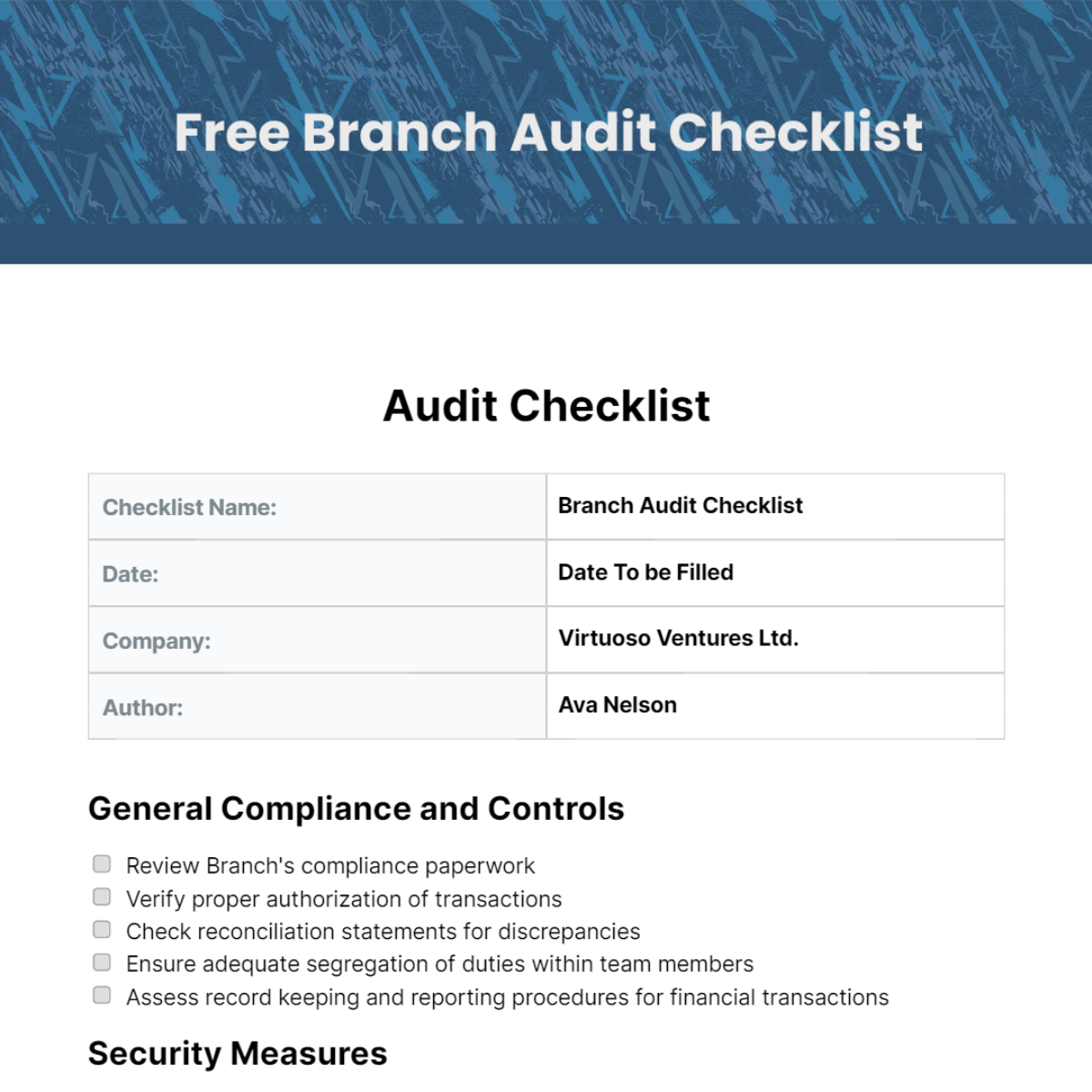Introduction
In the ever-evolving world of finance, ensuring the accuracy and compliance of foreign exchange (forex) transactions is paramount. A comprehensive bank audit forex branch audit checklist serves as an indispensable tool in safeguarding the integrity of these operations. This guide will delve into the intricacies of forex branch audits, providing a detailed checklist and essential insights to empower auditors and financial institutions alike.

Image: www.pdffiller.com
Understanding Forex Branch Audits
A forex branch audit is a specialized examination of a bank’s foreign exchange operations. Its primary objective is to assess the bank’s compliance with relevant regulations, internal policies, and accounting standards. By scrutinizing documentation, transaction records, and operational procedures, auditors can identify potential risks and ensure the reliability of financial reporting.
Comprehensive Bank Audit Forex Branch Audit Checklist
The following comprehensive checklist provides a framework for conducting effective forex branch audits:
1. Documentation and Verification
- Review KYC documentation for compliance
- Verify customer identity, purpose of transaction, and source of funds
- Examine trading agreements, master agreements, and confirmations
2. Risk Assessment
- Assess the bank’s risk appetite and management framework
- Evaluate counterparty creditworthiness and market liquidity
- Identify potential risks associated with specific currencies and economic conditions
3. Transaction Processing
- Trace transactions from initiation to settlement
- Verify trade date, settlement date, and exchange rate
- Review profit and loss allocations and hedging strategies
4. Accounting and Valuation
- Ensure compliance with accounting standards for forex transactions
- Verify valuation of foreign currency positions
- Examine accounting for realized and unrealized gains and losses
5. Operational Control and Security
- Evaluate operational controls over trade execution, confirmations, and settlement
- Assess the robustness of IT systems and information security measures
- Ensure segregation of duties and accountability for forex transactions
6. Compliance and Reporting
- Verify compliance with regulatory requirements for forex transactions
- Review internal policies and procedures for FX operations
- Examine reporting mechanisms for forex activity to regulatory authorities
Expert Insights and Actionable Tips
1. Leverage Technology: Utilize data analytics tools to efficiently monitor and analyze forex transactions, reducing manual effort and enhancing accuracy.
2. Collaborate with Business: Engage with frontline staff and business units to gain insights into operational challenges and risk areas, fostering a cooperative approach.
3. Focus on Data Quality: Emphasize the importance of maintaining high-quality data throughout the forex operations cycle, enabling reliable reporting and analysis.
4. Train Auditors: Regularly train auditors on the latest forex regulations, accounting standards, and audit techniques to ensure expertise and proficiency.

Image: www.template.net
Bank Audit Forex Branch Audit Checklist
https://youtube.com/watch?v=cUMoE59Whiw
Conclusion
Bank audit forex branch audit checklists are indispensable tools for ensuring compliance, accuracy, and risk management in forex operations. By adhering to these guidelines, financial institutions can safeguard the integrity of their transactions, minimize potential risks, and enhance the reliability of their financial reporting. Empower yourself with this comprehensive checklist and delve into the intricacies of forex branch audits, safeguarding the financial health of institutions and the trust of customers.






